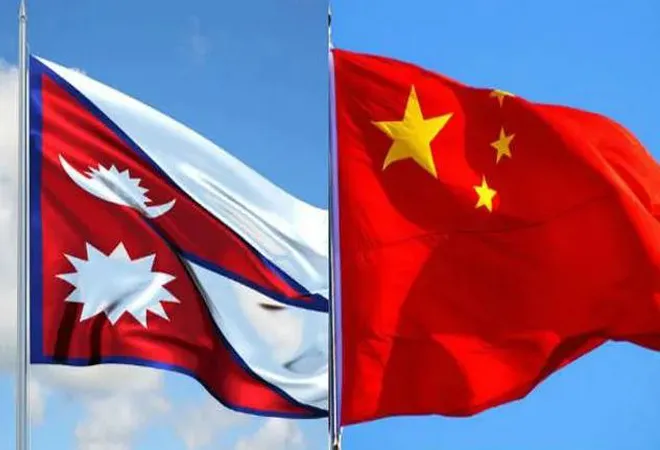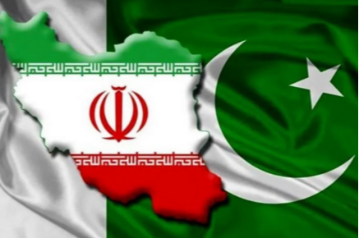
How does one define the Belt and Road Initiative (BRI)? Does the BRI only mean infrastructure projects that have been explicitly listed under the initiative by a host country? Or does it encompass a larger vision of connectivity and economic cooperation as put forth by Beijing? These are some of the questions Nepal is grappling with at the moment with the Pokhara International Airport being declared a ‘flagship
project of China-Nepal BRI cooperation’ by the Chinese mission in Kathmandu.
The five connectivities highlighted under the BRI are policy, infrastructure, trade, and financial and people-to-people connectivity.
The Pokhara Airport is not listed under
the nine projects put forth by Nepal under the BRI. However, the fact that China was expanding the ambit of the BRI in Nepal was indicated back in April 2022 itself, when then ambassador Hou Yanqi said that the
initiative ‘is based on a cooperative modality that includes grants and commercial cooperation…’ The projects that are being constructed in Nepal under BRI have three modalities. One, where Chinese contractors have worked on Asian Development Bank-funded projects such as the Gautam Buddha International Airport in Bhairahawa. Two, projects funded by the Nepal government and contracted to Chinese companies such as the Tribhuvan International Airport in Kathmandu. And three, projects such as the Pokhara Airport, which are funded by Chinese loans and built by Chinese companies.
China has since then doubled down on the BRI being more than just the nine projects in Nepal. Chinese Ambassador Chen Song once again
emphasised that the Pokhara Airport was ‘within the framework of the BRI agreement’ in June when a charter flight from Sichuan brought Chinese athletes to Pokhara for a dragon boat race festival. The ambassador
called the new payment agreement between WeChat and a Nepali bank, allowing Chinese tourists to pay in Nepal via WeChat, a part of “the five connectivities under BRI initiative”. The five connectivities highlighted
under the BRI are policy, infrastructure, trade, and financial and people-to-people connectivity. China has also recently launched the ‘Silk Roadster’ platform under the BRI in the country, which is intended to
expand people-to-people cooperation at the local government level.
Kathmandu defines the BRI as being project-led and has clearly said that no BRI project has taken off in Nepal.
On the other hand, Nepali officials have rejected such changes to the BRI framework. Kathmandu defines the BRI as being project-led and has clearly said that no BRI project has taken off in Nepal. Foreign Minister N.P. Saud
said, “The project implementation plan of the BRI is still under consideration,” which implies that Nepal views the BRI not as an umbrella initiative like Beijing does, but project-specific, in that only the nine projects—now reduced to eight after the 480 MW Phukot
Karnali was handed over to India’s NHPC—specifically listed by Nepal under the BRI can be termed as such. Nepal has also argued that the Pokhara Airport falls outside the purview of the BRI since the loan and other agreements were signed before Kathmandu signed up for the BRI in May 2017.
The crux of the issue lies in this difference in perception. Nepal is wary of succumbing to the expanded definition not just because the BRI is viewed as Beijing’s geopolitical instrument, but also due to the implications it may have on other bilateral agreements. That infrastructure projects outside the official purview of BRI—such as the airports in Pokhara and Bhairahawa—have been listed as BRI by Beijing’s officials is another cause for concern, since India—which is seen as the primary market for both airports—has refused to come on board the BRI, and has not engaged with it elsewhere in the region.
BRI in Nepal
As a 2022 AidData study
revealed, since the launch of the BRI, ‘Beijing has outspent Washington on a more than 2-to-1 basis, Brussels on a more than 4-to-1 basis, and London on a more than 8-to-1 basis’ in overseas investments. The financial health of the BRI’s loans, however, quickly gained attention when recipient countries such as Sri Lanka and Zambia began to suffer. Between 2019 and 2021
alone, China had to issue rescue loans worth US$104 billion to developing countries, often at higher interest rates. China also
had to renegotiate or write off at least US$78 billion in ‘bad loans’ between 2020-2023.
The financial health of the BRI’s loans, however, quickly gained attention when recipient countries such as Sri Lanka and Zambia began to suffer.
Such setbacks, especially post the debt crisis in Sri Lanka and Pakistan, have had their impact on Nepali policymakers. Although Nepal owes far less to China than other countries in the region—its outstanding external debt to China was US$259 million as of
April 2023—the economic crises in other South Asian countries have not gone unnoticed. When Foreign Minister Wang Yi visited Kathmandu in March 2022, Nepali officials told him that Nepal could not
take any new Chinese loans and sought grant assistance. Nepali officials also asked for new terms of borrowing, such as interest rates not exceeding 2 percent and a repayment period similar to that of multilateral institutions. ‘The Nepali
side has also maintained that projects under BRI should be open to all… meaning the right to bid cannot be reserved exclusively for Chinese firms’. Nepal is also
negotiating the inclusion of two new projects under the BRI.
This stance is a clear departure from the initial euphoria when Nepal signed up for the BRI in May 2017. The memorandum of understanding (MoU) on BRI signed
between the two countries also agrees to facilitate cooperation in each of the five areas of policy exchanges mentioned earlier. As such, a Nepali commentator with a background in law has
argued, the BRI MoU between Nepal and China “refute the popular assumption that the BRI is only an ambitious programme for financing large-scale infrastructure ventures…the statement by China that Pokhara International Airport is under the BRI has several legitimate justifications.”
The memorandum of understanding (MoU) on BRI signed between the two countries also agrees to facilitate cooperation in each of the five areas of policy exchanges mentioned earlier.
The Pokhara Airport is closest to how a BRI project is generally imagined. It was financed by a China EXIM Bank loan and built under an engineering, procurement, and construction (EPC) model by China CAMC Engineering. However, Nepal’s stance that the airport cannot be considered a BRI project is based on the legal aspect that agreements cannot be modified retrospectively. “The Chinese Embassy’s claim, therefore, is their own interpretation, which the Nepali side does not own up,” Nepali officials have
said.
Nepal is not the only country to reject a project as being under the BRI. In 2022, the Bangladesh foreign ministry refuted reports that the Padma River Bridge was a BRI project. What was notable was that the Chinese mission clarified the same
after Dhaka voiced its government’s ‘annoyance’.
China in Nepal’s infrastructure
China and/or its companies have extensively engaged in infrastructure projects in Nepal in the 21st century. A recent study titled
China’s Emergence in Nepal’s Infrastructure (which the author was part of) found that most big-ticket infrastructure contracts awarded to China since 2008 were awarded by governments led by communist parties in Nepal. Chinese companies have acquired contracts through government-to-government negotiations, such as the Pokhara Airport or the Kathmandu Ring Road expansion project funded under a grant modality; or via the Nepal government or its agencies, such as the Kathmandu-Terai Fast Track project being executed by the Nepal Army. Chinese companies have also taken the lead in infrastructure contracts awarded by multilateral institutions such as ADB, such as the new Bhairahawa airport or highway expansion projects.
Chinese companies have acquired contracts through government-to-government negotiations, such as the Pokhara Airport or the Kathmandu Ring Road expansion project funded under a grant modality.
So, while China’s engagement in Nepali infrastructure is layered and across the board, Kathmandu also does not want to be part of something it didn’t sign up for. Nepal’s pushback on BRI also emanates from its recent experience with the United States-led Millennium Challenge Corporation (MCC), whose inclusion under the Indo-Pacific framework was one of the primary reasons behind public opposition to the MCC. Kathmandu’s newfound reticence is also reminiscent of a larger tendency to sign up for bilateral agreements without due consideration of the larger ramifications, as witnessed during the widespread discussions on the MCC.
Nonetheless, such dissonance has not deterred further engagement between Beijing and Kathmandu, with several high-level visits from both sides in recent months including by the CCP’s International Liaison Department, whose officials launched the Silk Roadster programme in Nepal. Continued engagement on Beijing’s part also suggests that its economic or commercial interests in Nepal are secondary to the expansion of its political interest. That the Silk Roadster programme is targeted at local government-level functionaries and party officials,
including ‘short-term training opportunities in China for foreign political parties and technical personnel’, supports this contention. The inclusion of the Silk Roadster programme itself under the purview of the BRI—more akin to ‘soft’ diplomacy than the ‘hard’ infrastructure that the BRI has come to be known for globally—suggests China would like to see some progress on the BRI in Nepal, and that China itself is modifying the definition of BRI as it evolves.
Kathmandu’s newfound reticence is also reminiscent of a larger tendency to sign up for bilateral agreements without due consideration of the larger ramifications, as witnessed during the widespread discussions on the MCC.
The debate around the BRI in Nepal is likely to continue. China has also brought forth new initiatives such as the Global Development Initiative (GDI) and the Global Civilisational Initiative (GCI), which are amorphous at best at the moment. While Nepal is a member of the GDI, Ambassador Chen Song declared the dragon boat race festival held in Pokhara to be an initiative
under the GCI, which Nepal is yet to sign up for. China continues to
ask Nepal to participate in both the GCI and the Global Security Initiative, the latter of which embodies Nepal’s anxieties around security-oriented diplomacy on the part of the great powers. But above all, blurred definitions and unilateral declarations on Beijing’s part have left Nepal struggling to define the BRI and Xi Jinping’s other initiatives.
Amish Raj Mulmi is the Author of All Roads Lead North: Nepal’s Turn To China (Context/Hurst/Oxford University Press).
The views expressed above belong to the author(s). ORF research and analyses now available on Telegram! Click here to access our curated content — blogs, longforms and interviews.



 How does one define the Belt and Road Initiative (BRI)? Does the BRI only mean infrastructure projects that have been explicitly listed under the initiative by a host country? Or does it encompass a larger vision of connectivity and economic cooperation as put forth by Beijing? These are some of the questions Nepal is grappling with at the moment with the Pokhara International Airport being declared a ‘flagship
How does one define the Belt and Road Initiative (BRI)? Does the BRI only mean infrastructure projects that have been explicitly listed under the initiative by a host country? Or does it encompass a larger vision of connectivity and economic cooperation as put forth by Beijing? These are some of the questions Nepal is grappling with at the moment with the Pokhara International Airport being declared a ‘flagship  PREV
PREV


